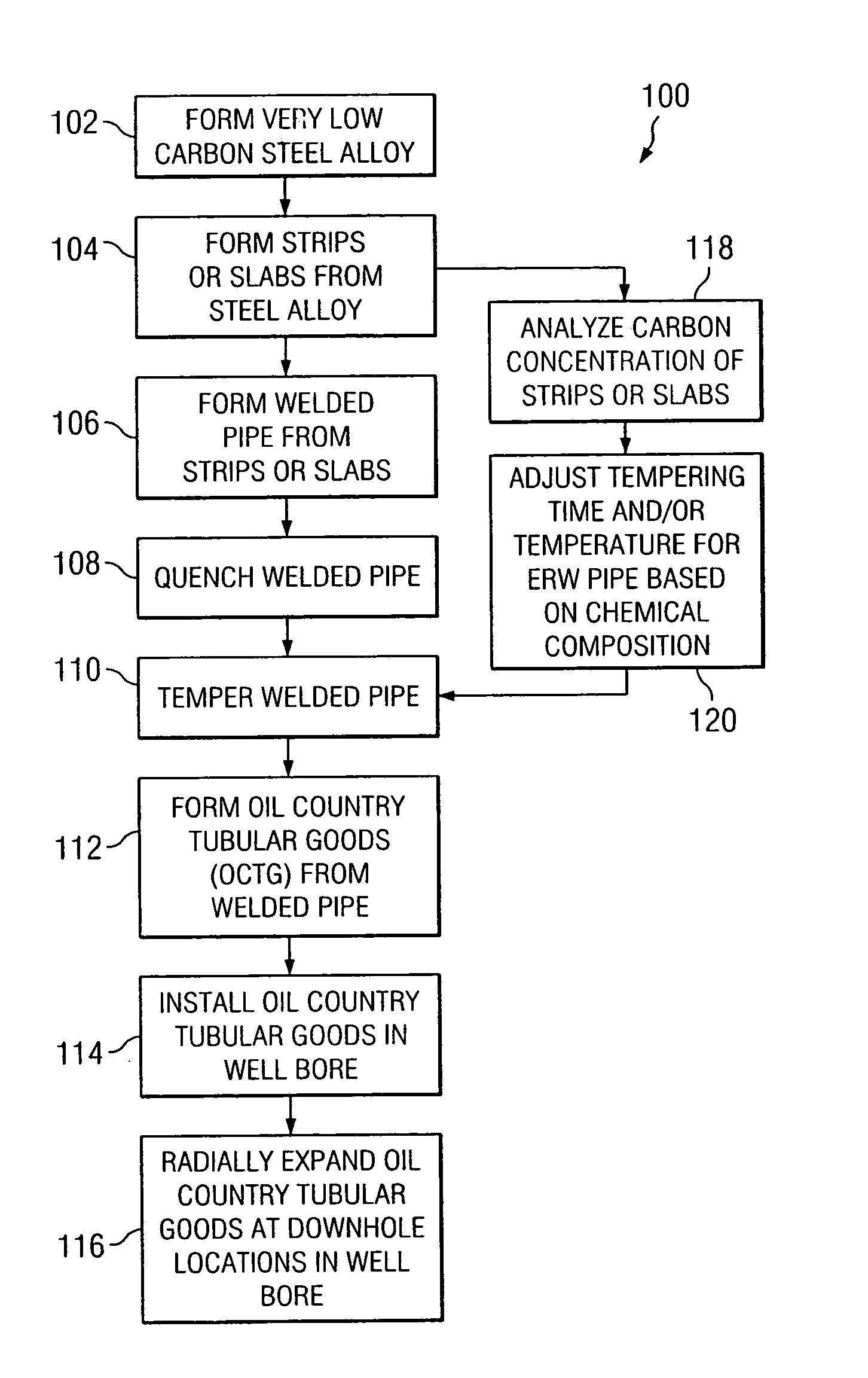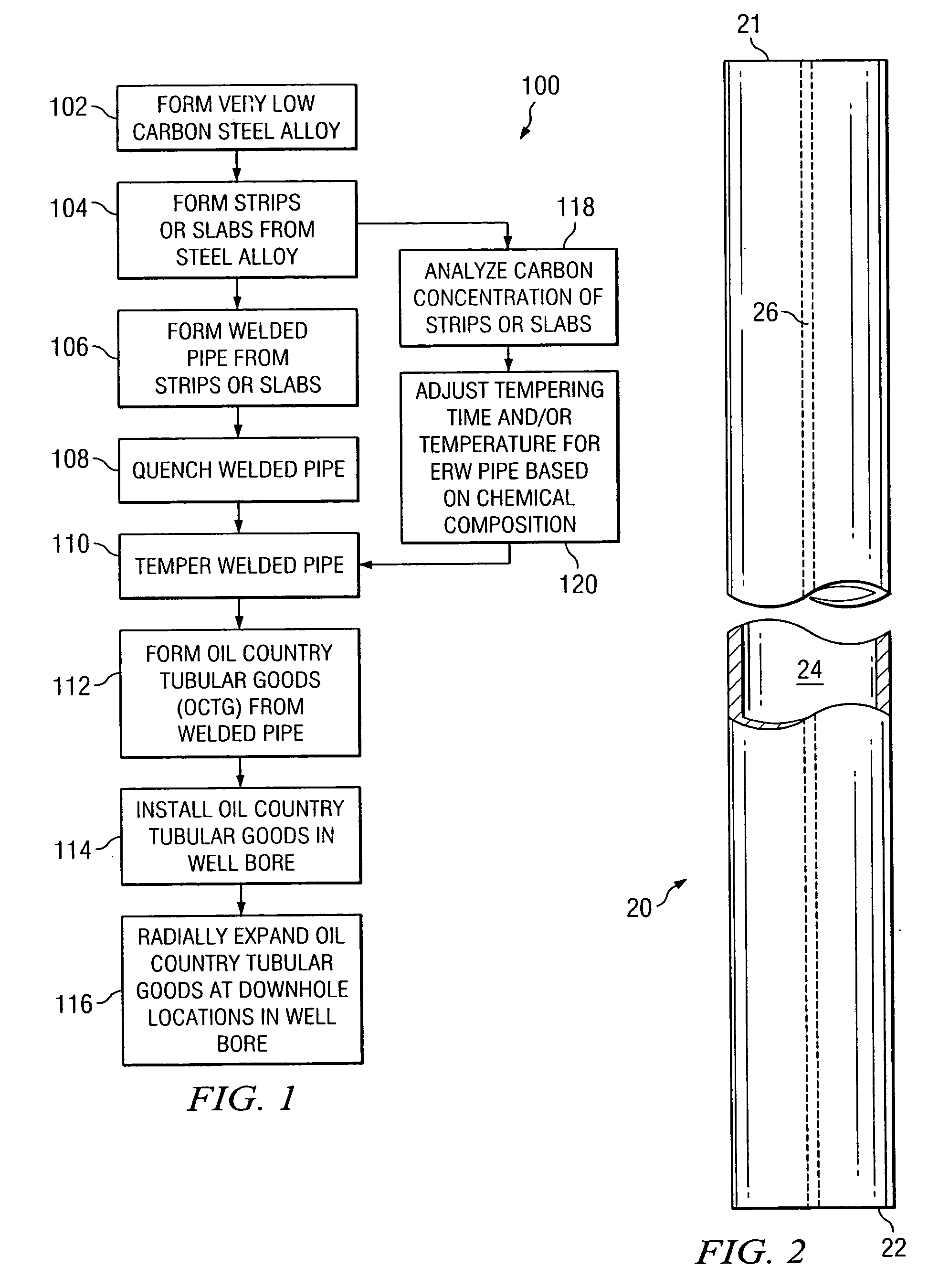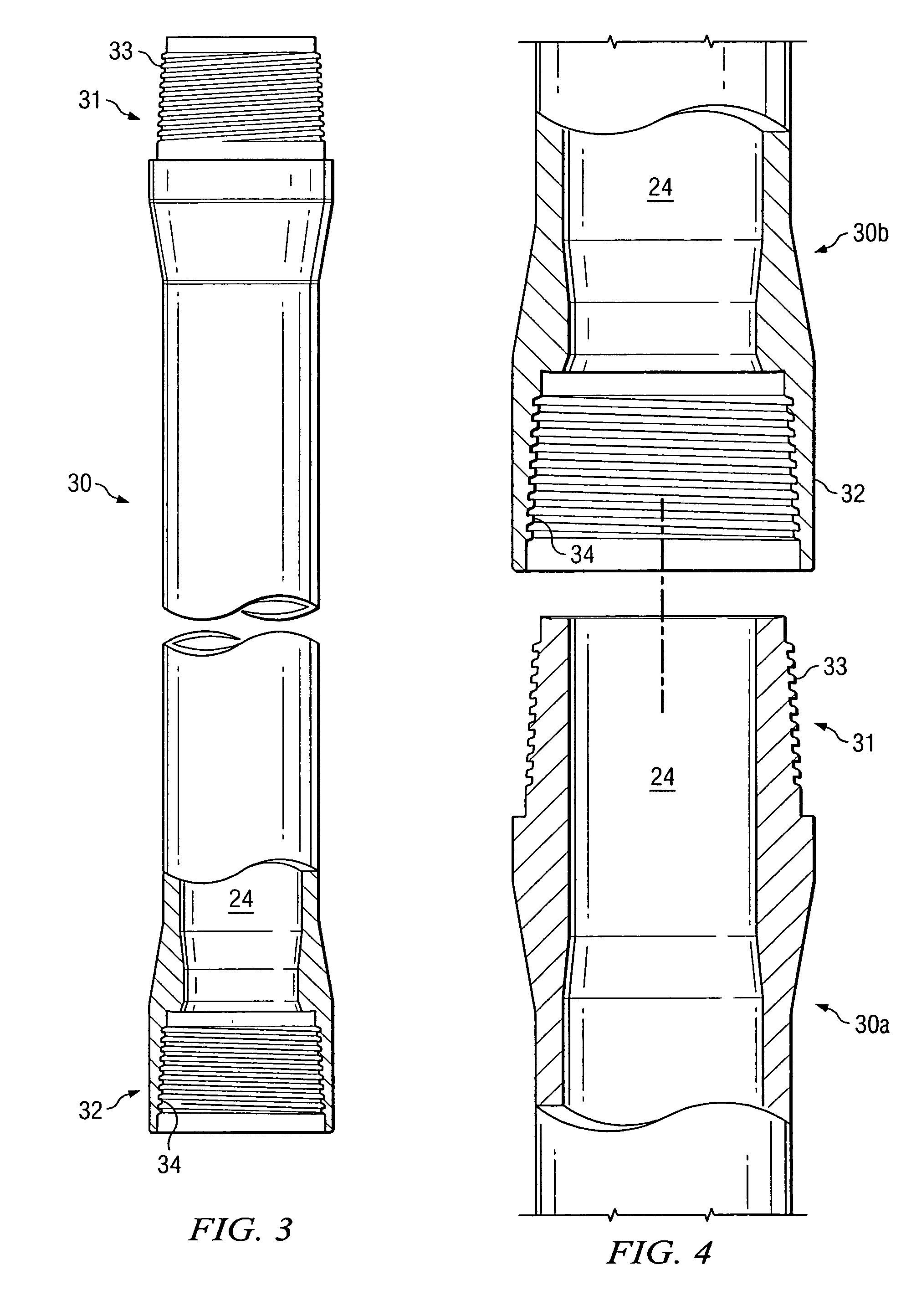Solid expandable tubular members formed from very low carbon steel and method
- Summary
- Abstract
- Description
- Claims
- Application Information
AI Technical Summary
Benefits of technology
Problems solved by technology
Method used
Image
Examples
Embodiment Construction
[0020]Preferred embodiments of the invention and its advantages are best understood by reference to FIGS. 1–6 wherein like numbers refer to same and like parts.
[0021]The term “very low carbon steel alloys” may be used in the steel industry to describe steel alloys with a concentration of carbon between approximately 0.001% and 0.1% by weight of the steel alloy. Low carbon steel alloys or mild steel often contains between approximately 0.1% and 0.3% carbon. Medium carbon steel alloys may contain between approximately 0.3% and 0.7% carbon. High carbon steel alloys may contain between approximately 0.7% and 1.5% carbon.
[0022]Very low carbon steel alloys formed in accordance with teachings of the present invention preferably have carbon concentrations of between approximately 0.03% and 0.06% by weight of the steel alloy. Such very low carbon steel alloys may also have at least ninety percent (90%) iron by weight of the steel alloy and at least ninety (90%) martensite by volume of the st...
PUM
| Property | Measurement | Unit |
|---|---|---|
| Temperature | aaaaa | aaaaa |
| Temperature | aaaaa | aaaaa |
| Temperature | aaaaa | aaaaa |
Abstract
Description
Claims
Application Information
 Login to View More
Login to View More - R&D
- Intellectual Property
- Life Sciences
- Materials
- Tech Scout
- Unparalleled Data Quality
- Higher Quality Content
- 60% Fewer Hallucinations
Browse by: Latest US Patents, China's latest patents, Technical Efficacy Thesaurus, Application Domain, Technology Topic, Popular Technical Reports.
© 2025 PatSnap. All rights reserved.Legal|Privacy policy|Modern Slavery Act Transparency Statement|Sitemap|About US| Contact US: help@patsnap.com



